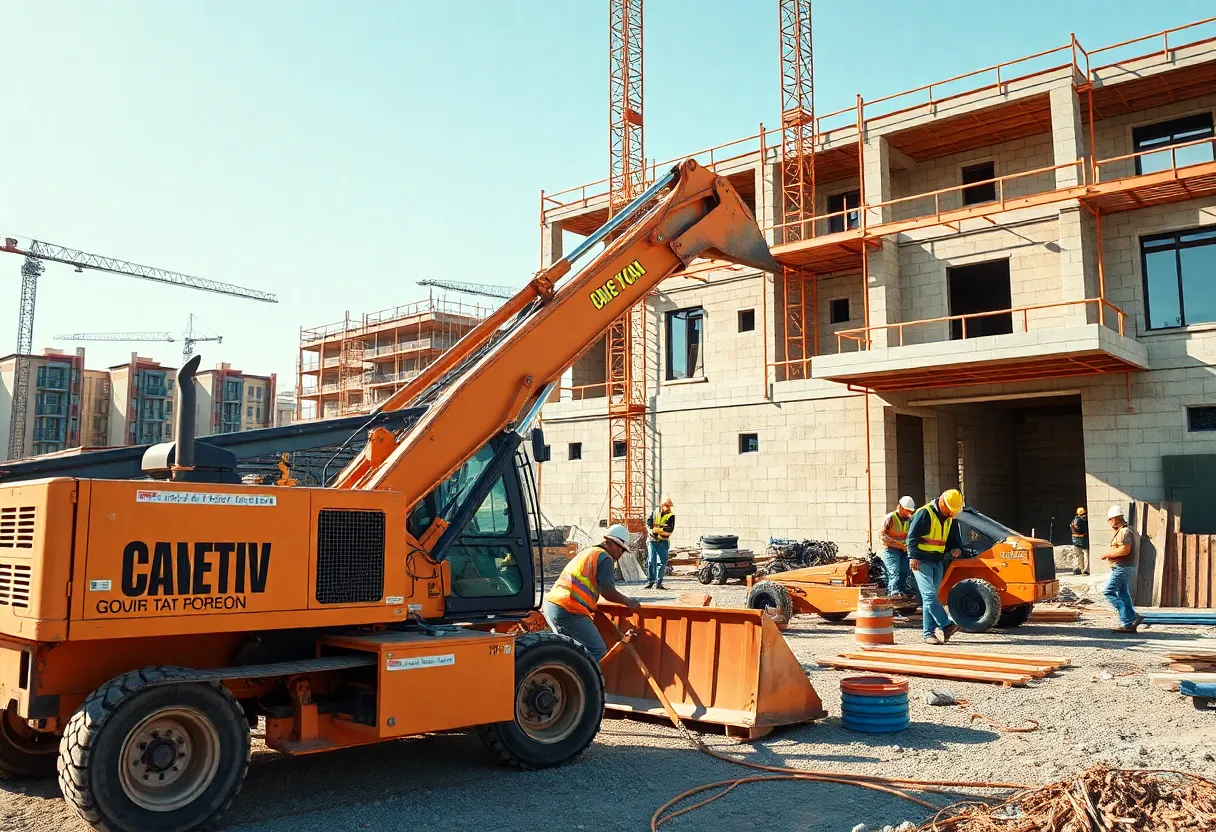United States, August 12, 2025
News Summary
The federal tax bill, known as the One Big Beautiful Bill Act, introduces significant tax reforms that benefit construction companies. Key updates include a 100% bonus depreciation for qualified property, a permanent Qualified Business Income deduction, and increased SALT deduction limits. These changes enhance cash flow and reduce tax liabilities, urging contractors to consult with tax advisors for optimal asset purchase strategies and compliance with new energy-related tax regulations.
One Big Beautiful Bill Act Brings Major Tax Changes for Construction Firms
What happened: The federal tax package known as the One Big Beautiful Bill Act (H.R. 1) was signed into law on July 4, 2025. The law includes several high-impact tax changes that take immediate effect for construction companies, including a restored permanent 100% bonus depreciation, a permanent Qualified Business Income (QBI) deduction, and a temporary but sizable increase in the state and local tax (SALT) deduction limit.
Key impacts at a glance
- Bonus depreciation: Restored and permanently set at 100% for qualified property acquired and placed in service after January 19, 2025.
- QBI deduction: Section 199A made permanent — eligible owners can claim up to a 20% deduction of qualified business income.
- SALT deduction: Federal limit raised from $10,000 to $40,000 for tax years through 2029 (indexed for inflation), reverting to $10,000 in 2030.
Why this matters now
The most immediate and broadly useful change for construction firms is the return of full bonus depreciation. Under the new rule, companies can fully expense the cost of qualifying new, and in some cases used, machinery, vehicles, and building improvements in the year those assets are placed in service after January 19, 2025. That generates immediate tax relief and can materially improve cash flow for companies making capital investments.
Because the bonus depreciation applies only to assets placed in service after the January 19, 2025 date, firms are advised to align purchase and project schedules so capital purchases are placed in service in 2025 or later if they want to capture the full benefit.
QBI and owners
Owners of S corporations, partnerships, and sole proprietorships now have long-term certainty for the Section 199A deduction. The law makes the QBI deduction permanent, allowing eligible owners to claim up to 20% of qualified business income. Full deduction eligibility applies to owners with taxable income below $394,600 (married) or $197,300 (single). Phase-outs occur across new expanded ranges — $75,000 for single filers and $150,000 for married filers — which clarifies when limitations apply and helps owners plan compensation and entity elections.
SALT relief for multi-state contractors
The SALT cap increase from $10,000 to $40,000 through 2029 provides meaningful relief for construction businesses that operate across multiple states and previously hit the $10,000 federal cap on state and local tax deductions. The increase is indexed for inflation, which may further expand the benefit over the covered period. The $40,000 ceiling reverts to $10,000 starting in 2030, so businesses should evaluate timing and state tax planning while the higher limit is available.
Planning and compliance actions
Construction companies should immediately consult tax advisors to review asset purchase timing, entity structure, and payroll strategies to optimize the QBI deduction and bonus depreciation. Contractors should also model SALT scenarios to determine which years capture the most benefit and whether any state-level actions affect deductibility. Careful timing of when assets are placed in service can materially change taxable income in a given year.
Energy credits and IRA amendments
The legislation also amends provisions of the Inflation Reduction Act of 2022 with specific deadlines and restrictions affecting wind and solar projects starting July 4, 2026. Facilities that begin construction after specified deadlines will face limitations on eligibility for some tax credits, including restrictions on receiving assistance from certain foreign entities. The law introduces new penalties for claiming unauthorized energy credits tied to violations related to foreign entity assistance. Construction firms working on renewable energy projects should review these deadlines and documentation requirements closely to preserve credit eligibility.
Bottom line for builders and contractors
The new law aims to enhance cash flow and reduce tax liabilities for construction companies through strategic actions: scheduling capital asset purchases to hit placement-in-service dates after January 19, 2025; optimizing ownership and compensation to maximize the QBI deduction; and taking advantage of the higher SALT cap while it lasts. Firms that ignore timing or compliance details risk losing valuable deductions and facing new penalties related to energy credits.
Next steps
- Meet with tax and accounting advisors to re-evaluate capital budgets and project schedules.
- Run QBI and SALT sensitivity analyses for projected taxable income scenarios.
- For renewable-energy projects, confirm construction start dates and document compliance with any foreign-assistance rules.
Frequently Asked Questions
Q: When does the 100% bonus depreciation apply?
A: It applies to qualified property acquired and placed in service after January 19, 2025. Qualifying assets include new, and in some cases used, machinery, vehicles, and building improvements that meet the rules.
Q: Is the QBI deduction changing?
A: The QBI deduction under Section 199A is now permanent. Eligible owners may claim up to 20% of qualified business income, with full deductions for owners under the stated taxable income thresholds and phased limits beyond those thresholds.
Q: How long does the SALT increase last?
A: The federal SALT deduction limit is increased to $40,000 for tax years through 2029 and will be indexed for inflation. It reverts to $10,000 beginning in 2030.
Q: Do energy credit rules change for renewable projects?
A: Yes. Amendments include deadlines and restrictions effective July 4, 2026. Projects that begin construction after specified dates may lose eligibility for certain credits, and new penalties apply for claiming unauthorized energy credits tied to foreign assistance violations.
Q: What should construction companies do first?
A: Consult tax advisors, align asset placement-in-service timing with 2025 or later, and evaluate ownership structures and state tax impacts to optimize available deductions and avoid compliance risks.
Deeper Dive: News & Info About This Topic
Additional Resources
- RSM US: One Big Beautiful Bill Tax Impact on Real Estate and Construction
- JD Supra: New Law Changes IRA Tax Credits Update
- Dentons: Romania Updated Special Construction Tax Rules
- White & Case: Executive Order Directs Treasury to Update Guidance on Beginning Construction Tax Credits
- Journal of Accountancy: Tax Changes in Senate Budget Reconciliation Bill
- Wikipedia: Taxation in the United States





